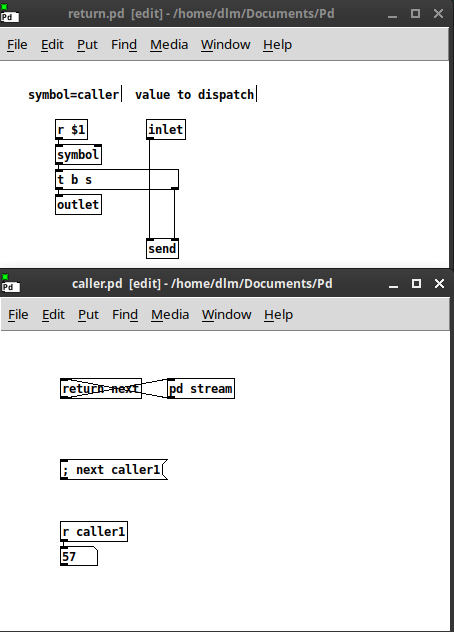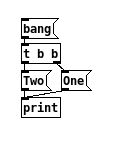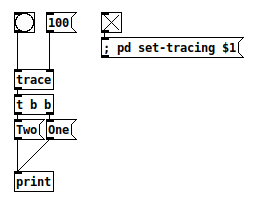@porres I am more than happy to answer any questions you have about using it or how it works. As I said in the other thread, I hate doing documentation, it tends to turn into a rabbit hole for me and eat up a good deal of time; once I start thinking about usage I start seeing how some things are not right in the abstraction and I start fiddling which means a change to the docs and it quickly turns into a feedback loop. That small change to the manual I suggested in the other thread caused/required me to reread much of section 2 and reread a few sections many times even though I had it all typed out after reading two short section once.
I don't think extending pd would solve this issue, the question was not really how to do this in an isolated situation but about the methodology. How do you do something like functionA (functionB (1 2) 849 functionC ($1 $2) asdf) in pd? In a one off situation it is generally a fairly simple problem to solve but to make it so at anytime you can do the equivalent of [abstractionA [abstractionB 1 2] 849 [abstractionC $1 $2] asdf] is a much more complicated issue and one which externals don't solve and often make it seem more complicated than it actually is because they have a tendency to make pd feel like a higher level language than it is, keep the user from ever really learning the nuances and techniques of the low level dataflow paradigm that is pd. The one off solutions which often come up in these threads result in what I think @ddw_music refers to as "spray everywhere," to try and build that solution into every abstraction so you can use it everywhere but to get the equivalent of abstractions calling abstractions would require you to fill your abstractions with [v ]s and [send]s and [receives]s in the vain attempt to cover every possible situation and very complicated/convoluted bit of inter abstraction communication. All my posts since the first asStream screenshot post have been about methodology, how to build higher level paradigms in a low level language like pd and avoid spraying everywhere, this is what asStream is meant to show. Like any well founded low level language pd is quite good about giving you the tools to build out higher level functionality and adapt it into your own language. At least that is what I got from this thread.
asStream has the potential to be a really useful abstraction but still has some issues, I can help you understand it and flesh it out, just ask your questions, they will probably make it a better abstraction than either of us could make on our own. As an exercise I will attempt to repatch it in your heavily subdivided patching style on my next break from my projects, I will probably fail but it will be interesting, I get the logic of the style but it obfuscates the dataflow for me and anytime I want to understand the work of a subdivider I have to remove all that subdivision, I can't even see how it could be subdivided into discrete, well named subpatches of highly singular/specialized function, for me it already is that.


 If the programming-ese terminology is too difficult, maybe focus on that example.
If the programming-ese terminology is too difficult, maybe focus on that example.


